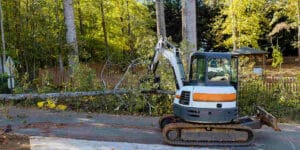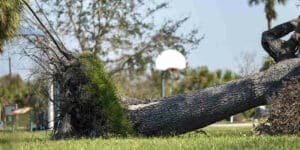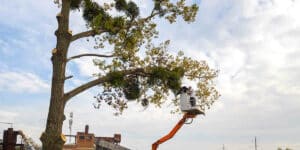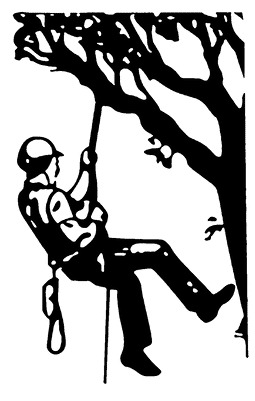Most Louisville residents want tall, vibrant, and fairly healthy trees around. Still, while trees are long-lived, they’re also living organisms susceptible to illness, injury, and, eventually, death. If you’d like a safe property with trees that are living their best lives, knowing how to tell if a tree is dying and taking prompt action can make a huge difference.
What are the signs of imminent tree death? To answer that you’ll need some guidance from a leading tree service in Louisville, KY, like Tree Care Inc. These skilled arborists diagnose and treat ailing trees almost daily in their line of work, and they share the warning signs of a tree with serious health problems below.
Why You Should Worry About Dead Trees in Your Yard
Is having a dead tree in your yard really that concerning? It is and for more than one reason.
When trees and plants experience structural compromise, one branch breaking off and falling onto something (or someone!) below it could prove disastrous. The heaviness of a fallen limb could cause major property damage and injuries if it crushes a house, car, or person.
Another problem is that the tree itself could also topple over. Does the dead or dying tree have root damage? A little bit of wind or a thunderstorm might be all it takes.
Pests are another concern with your dead trees. Insects like termites and carpenter ants thrive on dead wood. If pests nest in a dead tree, the infestation could also spread, kill other trees, or even enter your home.
Common Signs of Impending Tree Death
Despite Louisville’s ongoing tree planting efforts, not every specimen will enjoy a long, healthy reign. Learn how to tell if a tree is dying by reviewing these common warning signs:
Lots of Twigs and Dead Branches on the Ground
Whenever a tree is constantly shedding sticks, it’s unhealthy. Vibrant, healthy trees have flexible limbs that don’t break easily.
Unless there’s a known reason for twigs or sticks peppering your lawn, contact a tree care company for a tree health assessment.
Tree Bark Breaking Off
Tree bark protects interior tissues and the tree’s structure from exposure to the elements or pests. The bark shouldn’t peel or flake excessively because this creates wounds that leave your tree vulnerable. If that happens, the tree likely isn’t getting enough nutrients.
Tree bark should be green underneath if it’s a healthy tree that has enough nutrients and moisture.
Dead or Missing Leaves
Unless a tree is in its dormancy phase, it should have leaves covering its branches. A lack of leaves or prematurely dead leaves is an obvious indicator of a health-related problem.
If you’re giving it enough water, these tree issues could be the result of root damage, insect infestation, or disease.
Tree Pest Infestations
Often, dying trees have insect infestations because the drying wood attracts pests. Some pests to watch out for include the following:
- Termites: Some termite species feed on the cellulose in healthy trees, causing branches to break off easily. Other types like dead or dying wood.
- Bark beetles: These beetles look like grains of black or brown rice. They burrow under loose tree bark and nest in the tree.
- Carpenter ants: Unlike household ants, carpenter ants are much bigger and thrive in tree hollows and crevices.
Root Damage
When you know how to tell if a tree is dying, you’ll look at the tree’s less visible or accessible parts, as well—the roots. Has there been recent construction or landscaping projects that have involved digging? Could these events have resulted in unintentional tree root damage nearby?
Without a healthy root system, your tree won’t get enough nutrients and water. Contact experts like Tree Care Inc. as soon as you notice signs of root damage, such as:
- Sparse leaf growth
- Branch dieback
- Leaf browning
Tree Leaning
Sometimes, trees naturally grow at an angle instead of straight up. The slant doesn’t necessarily mean your tree is dying or even unsafe.
The only time you should worry about a slanted tree is when a formerly straight tree suddenly shifts to one side. If it’s nothing serious, arborists may recommend that you brace the tree to prevent it from falling over.
Evidence of Rot or Fungus
Though fungus is natural, it’s seldom a good thing to see on a tree. When mushrooms grow around the base of your tree, the fungus is eating away at the tree’s roots. On a tree’s trunk, mushroom growths often indicate internal tree rot.
Anytime you detect rot or fungus on a tree, you must act quickly to save the plant. Fungal treatments for trees only work at the problem’s earliest stages.
Do You Think Your Tree Is Dying? Here’s Your Next Step
If you think one or more of your trees are dying, the worst thing you can do is ignore it. It only takes a moment for a dead tree to fall, and you might not notice an infestation within the plant until the insects make their way into other healthy trees or even your home.
Why not get in touch with an ISA-certified arborist to evaluate the tree’s health? If you call them as soon as you notice problems with a tree, these professionals may be able to diagnose issues and implement a treatment to revive your tree’s health.
If it comes to tree removal, the worst-case scenario, these arborists can also ensure the process goes smoothly and help you prevent property damage.
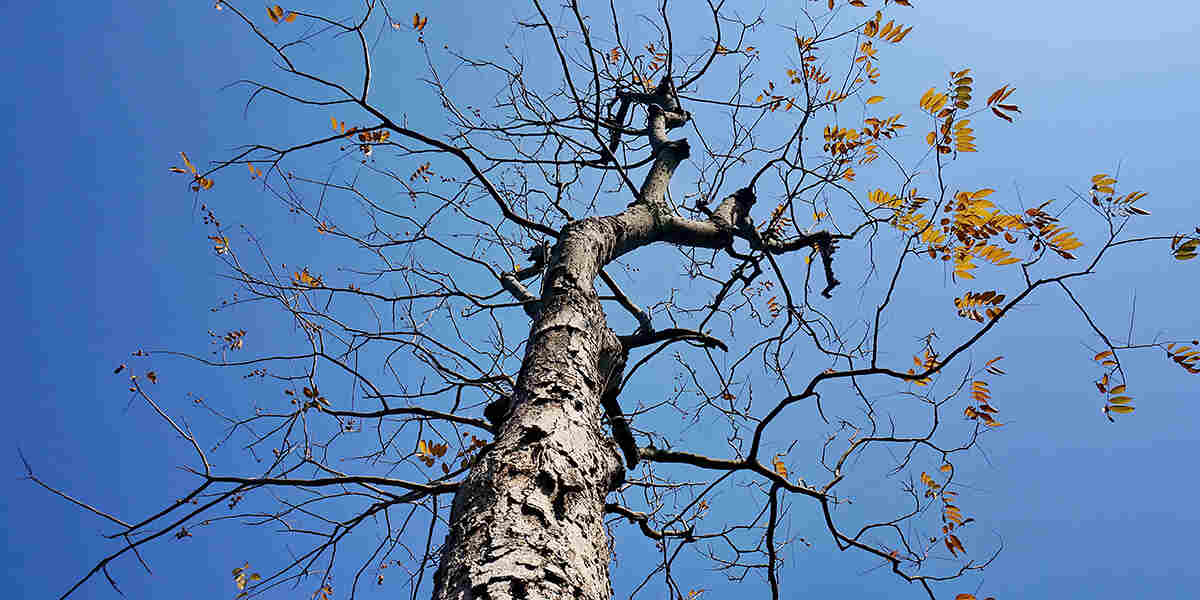
Contact Our Professionals at Tree Care Inc.
Since you know how to tell if a tree is dying, the next step if you suspect a problem is to ask for some professional help as early as possible. Dead or alive trees are no problem for tree service providers like Tree Care Inc, who provide outstanding tree care services in Louisville, Kentucky and the surrounds. As an ISA-certified arborist, we can evaluate your tree, treat it, or conduct the necessary tree removal services, leaving your yard hazard-free and gorgeous.
Tree Care Inc. treats or removes sick and damaged trees using the safest available techniques—call (502) 326-3661 to schedule an appointment today!


